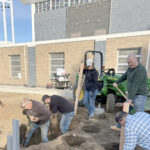NASA’s Roman Space Telescope to Revolutionize Stellar Research

NASA’s upcoming Nancy Grace Roman Space Telescope is set to significantly enhance our understanding of the universe, with capabilities that exceed initial expectations. Scheduled for launch between autumn 2026 and May 2027, the telescope will enable scientists to observe and measure seismic waves across the surfaces of over 300,000 red giant stars. This unprecedented capability highlights Roman’s potential impact on both exoplanet research and stellar astrophysics.
The Roman Space Telescope features an 8-foot (2.4-meter) mirror, similar to that of the Hubble Space Telescope, but boasts a field of view that is 100 times larger. One of its primary missions includes the Galactic Bulge Time-Domain Survey, which aims to analyze millions of stars in the Milky Way’s central bulge. Through this survey, researchers hope to detect exoplanets using a technique known as gravitational microlensing.
Gravitational microlensing occurs when the gravity of an unseen object, such as a planet, magnifies the light from a distant star. This technique allows astronomers to identify planets that may otherwise go unnoticed. While microlensing plays a vital role in exoplanet detection, other phenomena can also cause a star’s light to flicker. Stars are dynamic entities, with convective bubbles and oscillations that can lead to temporary brightness changes. The study of these oscillations, known as asteroseismology, can reveal crucial details about the stars themselves, such as their mass, size, and age.
According to study leader Trevor Weiss from California State University, Long Beach, “With asteroseismic data, we’ll be able to get a lot of information about exoplanets’ host stars, and that will give us a lot of insight on exoplanets themselves.” The research team utilized data from the Kepler Space Telescope, which successfully measured asteroseismic properties of 150,000 stars, to evaluate Roman’s observational potential. They discovered that Roman would excel in detecting stellar oscillations in red giant stars, which are more luminous and have oscillation periods ranging from hours to days.
Roman’s Galactic Bulge Time-Domain Survey will monitor hundreds of millions of stars in the Milky Way’s bulge every 12 minutes over multiple 70.5-day sequences. This frequent observation enhances the telescope’s ability to detect vibrations in red giants. As Marc Pinsonneault from Ohio State University noted, “Asteroseismology with Roman is possible because we don’t need to ask the telescope to do anything it wasn’t already planning to do.”
The bulge of the Milky Way, which contains the supermassive black hole Sagittarius A*, is the oldest part of our galaxy. Many stars in this region are aging and transitioning off the main sequence, where they generate energy through hydrogen fusion. As these stars evolve, they expand into red giants. Initially, estimates suggested that Roman could observe seismic waves from approximately 290,000 red giants. However, further analysis indicated that this number could exceed 300,000, with projections suggesting a maximum of 648,000 red giants within Roman’s field of view.
Weiss explained, “Now that we know the survey will entail a 12-minute cadence, we find it strengthens our numbers to over 300,000 asteroseismic detections in total.” He emphasized the significance of this sample size, stating, “It would be the largest asteroseismic sample ever collected.”
Understanding the properties of the stars hosting exoplanets can provide valuable insights into the planets themselves, including their locations in relation to habitable zones. Additionally, the observations will offer clues about the future of planetary systems as their stars transition into the red giant phase, ultimately shedding layers and leaving behind white dwarfs. The timeline for these transformations varies based on the mass of the star; more massive stars have shorter life spans.
In our solar system, planets like Mercury, Venus, and likely Earth will be affected by this evolution. Nevertheless, microlensing can detect planets located farther away from their stars, which may survive the red giant phase. By studying planets around red giants, astronomers can gain a clearer understanding of potential outcomes for our solar system’s planets.
Astronomers have already observed a noticeable deficit of planets orbiting red giants, and the findings from Roman are expected to enhance our understanding of evolved planetary systems. Pinsonneault highlighted the broader implications of this research, stating, “Our work will lay out the statistical properties of the whole population—what their typical abundances and ages are—so that the exoplanet scientists can put the Roman measurements in context.”
The asteroseismic discoveries made by the Roman Space Telescope will not only advance our knowledge of planetary systems but also help establish a timeline for the history of the Milky Way, particularly its bulge. Pinsonneault remarked on the potential for new discoveries, stating, “We actually don’t know a lot about our galaxy’s bulge since you can only see it in infrared light due to all the intervening dust. There could be surprising populations or chemical patterns there.”
As the launch date approaches, the scientific community eagerly anticipates the insights that the Nancy Grace Roman Space Telescope will provide, paving the way for a deeper understanding of our galaxy and beyond. Meanwhile, the new assessment of its asteroseismic capabilities has been published in The Astrophysical Journal, further solidifying Roman’s anticipated contributions to astrophysical research.






